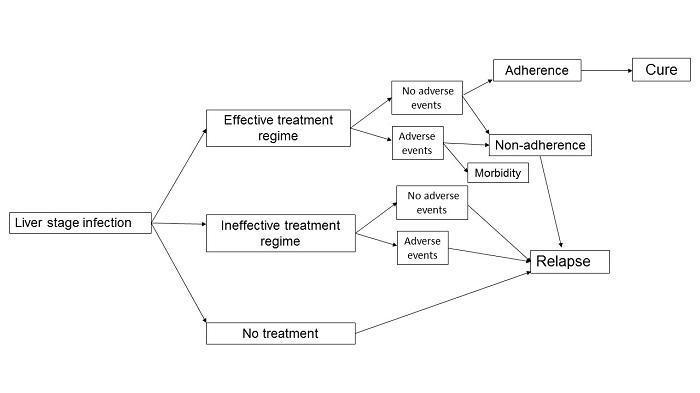Base de datos Cochrane de Revisiones Sistemáticas Protocolo - Intervención
Primaquine at alternative dosing schedules for preventing relapse in people with Plasmodium vivax malaria
Versión publicada: 04 mayo 2017 Historial de versiones
Esta versión no es la más reciente
Contenido relacionado
Revisiones y protocolos relacionados
Rachael Milligan, André Daher, Gemma Villanueva, Hanna Bergman, Patricia M Graves | 19 agosto 2020
Chaturaka Rodrigo, Senaka Rajapakse, Deepika Fernando | 6 septiembre 2020
Gawrie NL Galappaththy, Prathap Tharyan, Richard Kirubakaran | 26 octubre 2013
Patricia M Graves, Leslie Choi, Hellen Gelband, Paul Garner | 2 febrero 2018
Nithya Gogtay, Sridharan Kannan, Urmila M Thatte, Piero L Olliaro, David Sinclair | 25 octubre 2013
Raquel González, Clara Pons‐Duran, Mireia Piqueras, John J Aponte, Feiko O ter Kuile, Clara Menéndez | 14 noviembre 2018
Maya Tickell‐Painter, Nicola Maayan, Rachel Saunders, Cheryl Pace, David Sinclair | 30 octubre 2017
Henry C Mwandumba, Stephen B Squire | 23 octubre 2001
Lois C Orton, Aika AA Omari | 8 octubre 2008
Martin M Meremikwu, Chibuzo C Odigwe, Bridget Akudo Nwagbara, Ekong E Udoh | 12 septiembre 2012
Respuestas clínicas Cochrane
Smitha Bhat | 4 enero 2021
Smitha Bhat | 3 febrero 2020


